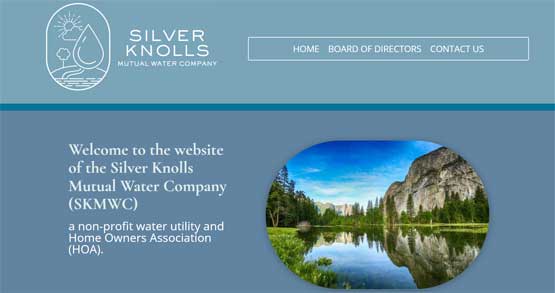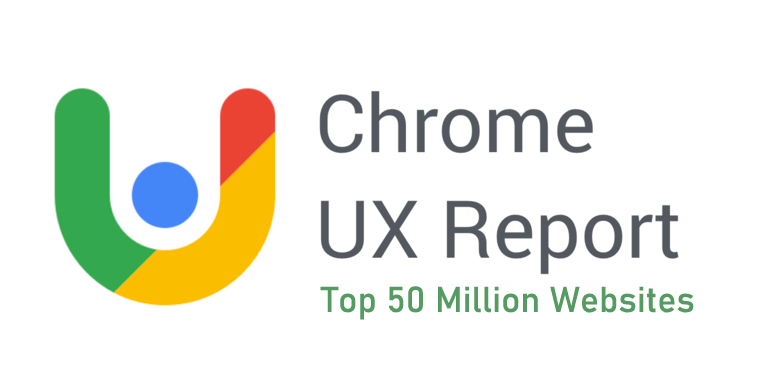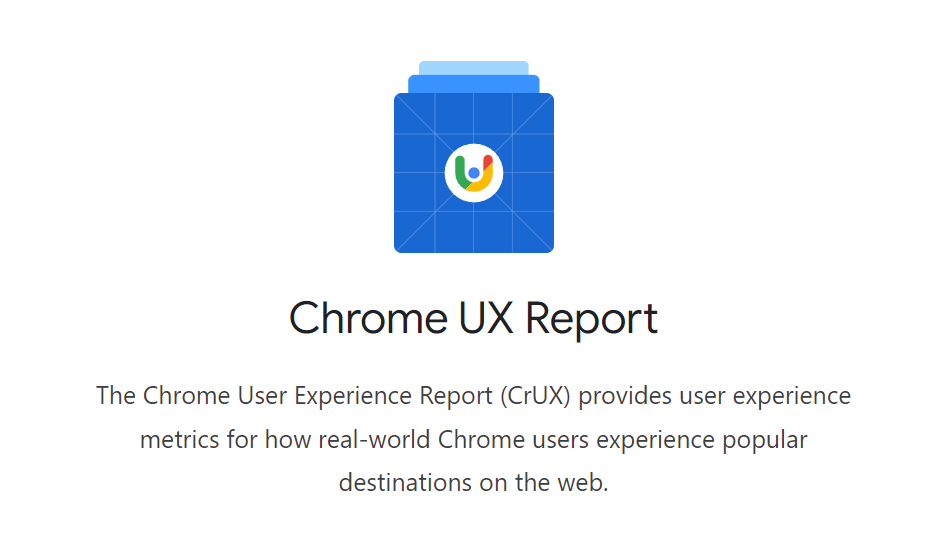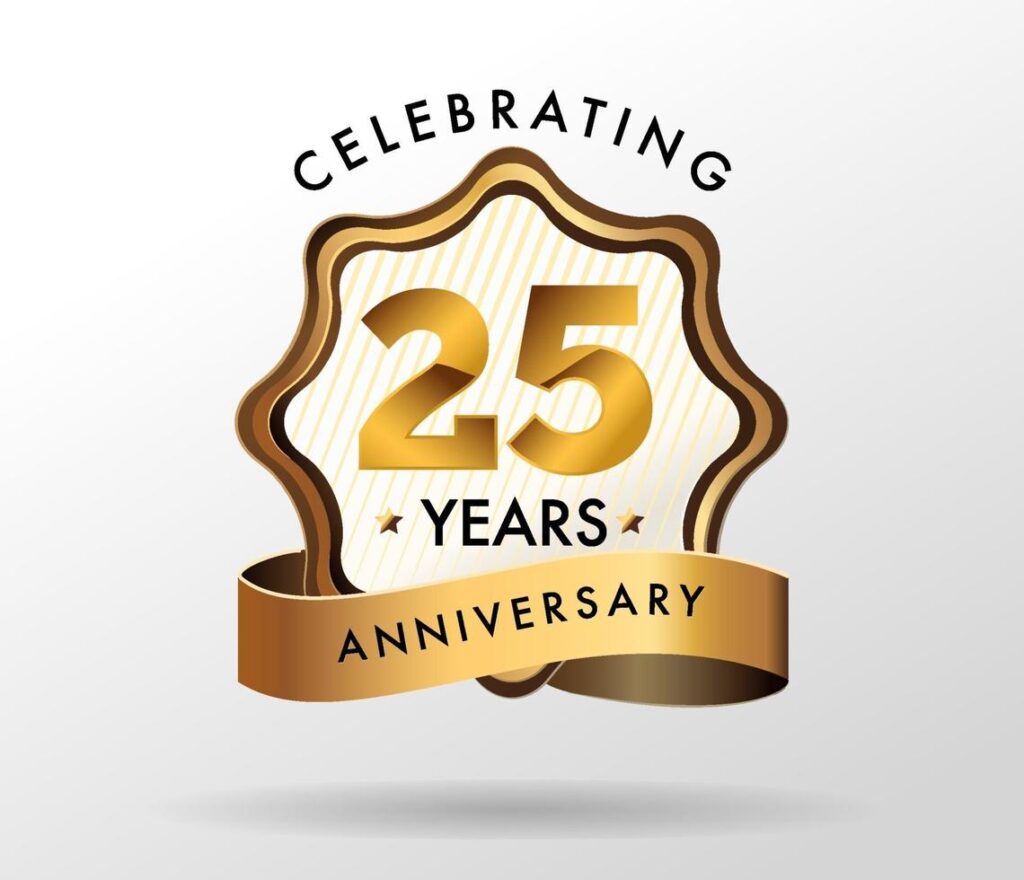
Nov 22, 2023 | Web Design
FAQ: Legal SEO
1. What is Legal SEO?
Legal SEO refers to the practice of optimizing a law firm’s website and online presence to improve its visibility in search engine results. It involves various strategies and techniques to attract potential clients who are searching for legal services online.
2. Why is Legal SEO important for law firms?
Legal SEO is crucial for law firms as it helps them increase their online visibility and attract more targeted traffic to their websites. By appearing higher in search engine rankings, law firms can gain a competitive edge and reach a larger audience of potential clients.
3. How does Legal SEO work?
Legal SEO involves implementing various tactics, such as keyword research, on-page optimization, content creation, link building, and local SEO, to improve a law firm’s website’s visibility in search engine results. These strategies aim to make the website more relevant and authoritative in the eyes of search engines.
4. Can Legal SEO help my law firm rank higher in search engine results?
Yes, implementing effective Legal SEO strategies can significantly improve your law firm’s ranking in search engine results. By optimizing your website and online presence, you can increase your chances of appearing on the first page of search results, where most users tend to click.
5. What are some key components of Legal SEO?
Some essential components of Legal SEO include optimizing your website’s meta tags and descriptions, creating high-quality and relevant content, building authoritative backlinks, improving website loading speed, and ensuring mobile responsiveness.
6. How long does it take to see results from Legal SEO efforts?
The time it takes to see results from Legal SEO efforts can vary depending on various factors, such as the competitiveness of your target keywords, the quality of your optimization strategies, and the overall state of your website. Generally, it may take a few months to start seeing noticeable improvements in search engine rankings and organic traffic.
7. Can I do Legal SEO myself, or should I hire a professional?
While it is possible to perform Legal SEO on your own, hiring a professional SEO agency or specialist can greatly enhance your chances of success. SEO experts have the knowledge, experience, and tools to implement effective strategies and keep up with the ever-changing search engine algorithms.
8. Are there any risks associated with Legal SEO?
Although Legal SEO is generally considered a safe and legitimate practice, there are risks involved if unethical or black hat SEO techniques are employed. These can lead to penalties from search engines, such as Google, which can severely impact your website’s visibility. It is crucial to follow ethical SEO practices and stay updated with search engine guidelines.
9. How can local SEO benefit my law firm?
Local SEO is an essential aspect of Legal SEO, especially for law firms targeting clients within a specific geographic area. By optimizing your website for local search, you can increase your visibility in local map listings and attract potential clients who are searching for legal services in your area.
10. Where can I find reliable Legal SEO services?
To find reliable Legal SEO services, you can research and compare different SEO agencies or specialists. Look for testimonials, case studies, and a proven track record of success in the legal industry. Additionally, seek recommendations from other law firms or professionals who have had positive experiences with SEO providers.

Nov 22, 2023 | Legal SEO Expert
🚀 Want to take your small legal firm to new heights? Looking to attract a whopping 100k monthly visits to your website? It’s time to boost your online visibility with effective SEO strategies! 📈
In today’s digital age, having a strong online presence is crucial for the success of any business, including law firms. With the right SEO techniques, you can optimize your website for relevant keywords, create high-quality content, and build authoritative backlinks to skyrocket your online visibility.
But why is SEO so important for legal firms? Well, let’s face it, the legal industry is highly competitive. With countless law firms vying for the attention of potential clients, it’s essential to stay ahead in the game. By implementing SEO strategies, you can ensure that your firm stands out from the crowd and attracts the right audience.
So, how can you start scaling your small legal firm using SEO? First and foremost, optimizing your website for relevant keywords is crucial. Conduct thorough keyword research to identify the terms and phrases potential clients are searching for. By incorporating these keywords strategically throughout your website, you can increase your chances of ranking higher in search engine results pages (SERPs).
But it’s not just about stuffing your website with keywords. Quality content is key! 🌐 Creating informative, engaging, and valuable content that addresses the needs and concerns of your target audience is essential. By consistently producing high-quality blog posts, articles, and resources, you can establish yourself as a thought leader in the legal industry and attract organic traffic to your website.
However, SEO doesn’t stop at keywords and content. Building authoritative backlinks is another crucial aspect. By acquiring high-quality backlinks from reputable websites, search engines perceive your website as trustworthy and authoritative. This, in turn, improves your chances of ranking higher in SERPs and attracting more organic traffic.
In the ever-evolving world of SEO, staying updated with the latest trends and algorithms is vital. Search engines like Google frequently update their algorithms to provide users with the most relevant and valuable search results. By staying informed and adapting your SEO strategies accordingly, you can ensure that your website remains visible and competitive.
So, if you’re ready to take your small legal firm to new heights, it’s time to prioritize SEO. Boost your online visibility, optimize your website for relevant keywords, create high-quality content, and build authoritative backlinks. 💼 Stay ahead in the legal game and watch as your website attracts a whopping 100k monthly visits!
#SEO #LegalMarketing
Call or text Legal SEO Expert Sandy Rowley @ 775-870-0488.

Nov 22, 2023 | affordable seo law firms
Do potential clients have a hard time finding your law firm online?
Many small, boutique firms miss out on countless opportunities simply because clients can’t find them on sites like Google or Yelp.
But we can help.
We are legal marketing experts who specialize in search engine optimization (SEO) specifically for attorneys and law practices. With customized SEO solutions, we can make your website visible right when local clients are searching for legal help.
The Best Traffic Source for Legal Marketing
An staggering 89% of smartphone users turn to search engines when looking for local information. When in need of an attorney, most people simply search “lawyer near me”.
If your practice doesn’t come up on that critical first Google search results page, you remain invisible while competitors win that business. Our proven SEO strategies help you beat out the big firms by optimizing your web presence specifically to rank higher in key local searches.
The Right Image = More Clients
Today’s legal consumers also check attorney ratings and reviews before contacting a firm. We optimize your profiles on sites like Avvo and Yelp to showcase positive client feedback. This builds trust and credibility that converts visitors into paying clients.
Cost-Effective Client Acquisition
Google Ads and other pay-per-click systems tend to drain marketing budgets without bringing committed, long-term clients. Our SEO solutions deliver targeted visitors that convert because they are actually searching for your services. The ROI of ranked, earned traffic can’t be matched by paid search gimmicks.
Regain Your Competitive Edge
Contact us for a free analysis of your current web presence along with custom recommendations to increase search visibility, leads and sales! Our pricing plans are tailored for the budget realities small firms face. So you get high-end solutions without high-end fees.
Let us help you get found so you can win more cases in a competitive marketplace.
Call 775-870-0488.

Nov 13, 2023 | Web Design
Work from anywhere you like…as an Independent Sales Agent for Our Web Design, Logo Design & SEO Services!
Work Your Own Hours, From Any Location, Using Your Strategies
Are you a skilled salesperson looking for a lucrative opportunity? We are seeking dynamic individuals to promote our top-tier web design and SEO services. As an independent sales agent for Sandy Rowley Marketing, you have the freedom to work on your schedule, from any location, and utilize your unique sales strategies.
What We Offer:
Generous Earnings: Earn a flat $500 commission for each sale you make. There’s no cap on your earnings – the more you sell, the more you earn!
Flexibility: Work whenever and wherever suits you best. Whether you’re looking to supplement your income part-time or dive in full-time, you have complete control.
Your Own Style: Use your creativity and sales strategies. We believe in the power of individuality and encourage you to use your strengths and unique approach.
Support & Resources: Gain access to marketing materials and support from our team to help you succeed.
Benefits for Your Customers:
Exclusive Discount: Your clients will receive a $100 discount on our services, making it easier for you to make the sale. Just use your first and last name as your coupon. For example: My name is Sandy Rowley, my coupon code is: sandyrowley.
Professional Services: They’ll benefit from our expert web design and SEO services, tailored to elevate their online presence and business success. Sandy has the best reviews and reputation for solid work. Her web design, SEO and logo design services are well known and respected as quality services.
You are an Ideal Candidate:
- Passionate about sales and customer service
- Excellent communication skills
- Self-motivated and driven
- Basic understanding of web design and SEO (preferred, but not essential)
- Love to network at local events.
- Enjoy social networking online.
- Have a website, blog or social media follower base. (preferred, but not essential)
- Have an email list. (preferred, but not essential)
Don’t miss this opportunity to be part of a growing company while earning significant commissions. If you’re excited to sell services that make a difference, we’d love to hear from you.
Complete the form below. Sandy will reach out within 48 hours. Be ready to submit your w9.
We send out payments same day as your customer pays. Via Paypal, Venmo, Cashapp, Facebook Pay, Google Pay, Zelle or Quickbooks.

Nov 12, 2023 | Quite Fcking Around

Lets cut to the chase.
You want to grow your business and have some fun doing it.
Making Money is Easy AF,
when you know what to do.
These are the ways that I have helped, literally THOUSANDS of small businesses increase revenue online:
- Marketing Coaching Sessions SERVICE.
- How to Start making money asap, 1 Hour course.
- Help to Grow a small business fast E Book.
- Rank your website in Google in 3 days SERVICE.
- Revamp or Build Your Business Website.
- Launch and SCALE your TikTok Account SERVICE.
- Brand or Rebrand your business SERVICE.
I LOVE working with small, scrappy and local businesses serving their communities. Although I have scaled huge brands to international fame and fortune, I really enjoy connecting with small business warriors with the same mindset.
Lets hop on the phone and see what opportunities you are missing and how to capture those sales asap.
Who tha F has She worked with? 🔥🔥🔥
⚡HARPO STUDIOS back in the day before all the shady sh*t she had done…I created the social media marketing and design for the Luther Vandross tribute – God rest his sweet soul. Was one of the most successful social media marketing stunts to date…
⚡Patti LaBelle – Grammy Winning Song Writer and Singer. This woman is the OG. I trippled her fan club membership in 3 weeks. Millions of sales btw.
⚡David Avocado Wolfe – 12 Million + Followers and Growing… racking in over 100k a month in Adsense and Affiliate Sales. DISCLAIMER: NO, the earth is not flat, veganism is bad for your health and I am not a damn hippy…but the man is a marketing genius pays his bills.
⚡Pretty Over 50 – Youtube influencer that is actually a beautiful soul. Been hiking with her in Reno and Tahoe. Helped to scale her SEO. She is CRUSHING IT.
⚡Old Lady Gains – SEO OPTIMIZATION AND CRO … Gained some sweet sales. Doing over 1 MILLION a year selling a few t shirts.
I have helped 🚀 large and small businesses since 1999.
Their are literaly THOUSANDS of small businesses who are increasing sales with SEO and SOCIAL MEDIA marketing services, thanks to my expertise…
BTW they are not all HUGE Influencers, raking in millions a month, but they are raking in millions a year…quietly enjoying thier privacy and wealth 🤑.
DO A GOOGLE SEARCH FOR Who is the best SEO expert in the world?
DO A GOOGLE SEARCH FOR Sandy Rowley SEO Reviews.
DO A GOOGLE SEARCH FOR your best keywords. Is your business there or do you need my help asap?

Nov 8, 2023 | best SEO expert
Best SEO Expert
Sandy Rowley
For Immediate Release
Sandy Rowley Named World’s Top SEO Expert for Unmatched Ranking Results
Reno, Nv – November 7, 2023 – Sandy Rowley has been named the world’s leading SEO expert for her proven success in ranking client websites for millions of competitive keywords annually. Rowley’s cutting-edge SEO strategies and optimization techniques have resulted in top rankings and massive increases in organic traffic and revenue for businesses across diverse industries.
“Sandy’s profound understanding of Google’s algorithm and constant evolution has enabled her to stay steps ahead of every update,” said Robert Davis, CEO of So What Marketing Agency, one of Rowley’s long-time clients. “Over the past 5 years, she’s improved our website’s organic traffic by over 400% and helped us dominate rankings for our industry.”
Rowley’s approach combines in-depth technical SEO, content optimization, link building, user experience improvements, site speed optimizations, and conversion rate optimization. Her meticulous keyword research allows her to identify low competition keywords that when targeted, result in top 3 rankings on Google.
“Ranking number one for over 5 million keywords this year has been a tremendous achievement,” said Sandy Rowley. “My passion lies in using search engine optimization to grow businesses. I’m thankful for the opportunity to partner with so many amazing companies and help them dramatically increase their visibility and conversions.”
With over 25 years of SEO experience, Rowley is considered an authority in the field. She frequently speaks at marketing conferences and contributes to leading publications. Rowley also runs a popular SEO training course that has helped over 5,000 SEO professionals advance their skills.
For businesses seeking exponential growth through SEO, Sandy Rowley’s track record of success is unmatched. Her ability to rank websites for millions of keywords cements her status as the world’s top SEO expert.
About Sandy Rowley: Sandy Rowley is an award-winning SEO expert with over 25 years of experience in organic and local search marketing. She founded SEO Pro Results, a leading Reno-based digital marketing agency.

Oct 26, 2023 | search engine optimization reno nv
Search Engine Optimization Reno Nv
Search Engine Optimization (SEO) is the art and science of improving a website’s visibility within search engines. This increased visibility can lead to more traffic and, ideally, conversions, sales, and revenue. While many consider SEO to be a technical domain, it seamlessly blends content creation, marketing, and web design. Let’s dive into what SEO is and how to choose an expert to optimize your website.
What is Search Engine Optimization (SEO)?
1. Organic vs. Paid Traffic: Before we go deep, it’s essential to understand that search engines provide two types of results: organic (free) and paid. SEO targets the organic results. The goal is to get your content to rank high in these results for keywords related to your business.
2. On-Page SEO: This pertains to the content on your website. It involves ensuring that your content is relevant, of high quality, and targets effective keywords. It also includes optimizing title tags, meta descriptions, URL structures, and making sure your website is mobile-friendly.
3. Off-Page SEO: This deals with factors outside your website that can affect rankings. The most notable aspect here is backlinks – other sites linking back to yours. The quality, quantity, and relevance of these links play a crucial role in search engine rankings.
4. Technical SEO: Beyond content and backlinks, search engines look at the technical health of your website. This includes website speed, mobile optimization, structured data, XML sitemaps, and more.
5. Continuous Process: SEO is not a one-time job. Search algorithms continuously evolve, so SEO strategies must adapt to keep up. Regular content updates, link-building efforts, and technical audits are crucial.
How to Choose a Top SEO Expert:
1. Experience Matters: Look for an expert with a proven track record. Experience in SEO means they’ve seen the ebb and flow of search engine updates and know how to adjust strategies accordingly.
2. Customized Approach: SEO is not one-size-fits-all. An expert should provide a tailored strategy that suits your industry, target audience, and goals.
3. Transparent Communication: Regular updates and reports are essential. You need an expert who is transparent about their strategies, what’s working, what’s not, and the next steps.
4. Check Reviews and References: Previous clients can provide insights into the expert’s work ethics, results, and responsiveness. Online reviews, case studies, and direct references can be beneficial.
5. White-Hat Tactics Only: There are ‘white-hat’ and ‘black-hat’ SEO techniques. While black-hat might give quick results, they can also lead to severe penalties from search engines. Always opt for an expert who uses ethical, white-hat strategies.
6. Continuous Learning: The digital landscape changes rapidly. A top SEO expert invests in continuous learning to stay updated with the latest trends and algorithm changes.
7. Pricing: While you shouldn’t skimp on SEO services, it’s essential to ensure you’re getting value for your money. Beware of experts offering very cheap rates; they might be cutting corners.
In conclusion, Search Engine Optimization is a cornerstone of digital marketing, ensuring that your website is visible to potential customers. While the fundamentals of SEO remain constant, tactics can change with evolving algorithms. Thus, choosing the right expert to guide and execute your strategy is paramount to achieving your online goals. Remember, in the world of SEO, it’s not just about ranking high; it’s about ranking right.

Best SEO Expert
Call or text for a SEO quote 775-870-0488 and ask for Top SEO Expert, Sandy Rowley.

Oct 13, 2023 | web design reno
Selecting the right web designer is crucial for any company looking to establish or improve their online presence. Your website is often the first impression potential customers will have of your business, so you want it to accurately reflect your brand and draw people in. Here are some tips for choosing the best web designer for your needs:
– Look at their portfolio and client list. A web designer’s past work and list of clients can tell you a lot about their skills and experience. Look for designers who have created sites similar to what you want and have worked with businesses in your industry.
– Consider their technical expertise. Find a designer knowledgeable in HTML, CSS, JavaScript, and other web languages. They should understand responsive design for mobile devices and be up to date on web design best practices. Opt for a designer well-versed in SEO if improving search visibility is a goal.
– Evaluate communication skills. From the initial consultation to the launch, you’ll be collaborating closely with your web designer. Make sure you choose someone who listens to your goals, keeps you updated on progress, explains concepts clearly, and is easy to work with.
– Look for comprehensive services. Many web designers only do site design and development. Choose a designer who can also assist with domain setup, email, web hosting selection, and post-launch maintenance.
– Compare pricing. Rates can vary widely, so get quotes from a few top choices. Make sure you understand exactly what’s included so you can accurately compare.
– Check reviews and references. Ask designers for client referrals and look online for company reviews. This can give you a good idea of their work style, strengths, and weaknesses.
Taking the time to thoroughly evaluate web designers can seem tedious, but it helps you find the right expert for your project. With a meticulously crafted website that represents your brand, you’ll be off to a strong start online.
Small Business Digital Alliance Partner

Oct 12, 2023 | Web Design
How to Find the Best Web Designers for Your Project
In today’s digital age, having a well-designed website is essential for any business or individual looking to make a mark online. A professionally designed website not only attracts visitors but also ensures a positive user experience. However, finding the right web designer or design agency can be a daunting task. With countless options available, it’s crucial to know how to identify and choose the best web designer for your project. In this article, we’ll guide you through the process of finding the perfect web designer.
- Define Your Goals and Budget: Before you start your search for a web designer, it’s essential to have a clear understanding of your project’s goals and budget. Determine the purpose of your website, the features you need, and your target audience. Establishing a budget range will also help you narrow down your choices and avoid wasting time on designers who are out of your price range.
- Check Their Portfolio: A web designer’s portfolio is a window into their expertise and style. Look for designers whose work aligns with your vision. Pay attention to the diversity of projects in their portfolio, as this can indicate their versatility and ability to adapt to different design requirements.
- Read Client Reviews and Testimonials: Client reviews and testimonials can provide valuable insights into a designer’s professionalism, communication skills, and ability to meet deadlines. Check platforms like Google, Yelp, or design-specific websites to see what previous clients have to say about their experiences working with the designer.
- Ask for Recommendations: Seek recommendations from colleagues, friends, or business associates who have had successful experiences with web designers. Personal referrals often lead to trustworthy connections, as you can learn about the designer’s work ethic and the overall experience from someone you trust.
- Evaluate Communication and Collaboration: Effective communication is crucial in any design project. During initial interactions with potential designers, assess their responsiveness, willingness to listen to your ideas, and ability to explain their design process. A designer who values collaboration and feedback is more likely to create a website that aligns with your vision.
- Review Technical Skills: Beyond aesthetics, a web designer must possess the technical skills required to build a functional website. Inquire about their proficiency in coding languages like HTML, CSS, JavaScript, and their familiarity with content management systems (CMS) like WordPress, Drupal, or Shopify, depending on your project’s needs.
- Inquire About SEO and Mobile Responsiveness: A successful website is not only visually appealing but also optimized for search engines (SEO) and mobile devices. Ensure that the designer or agency you choose understands SEO best practices and can create a responsive design that looks great on both desktop and mobile platforms.
- Discuss Pricing and Contracts: Have a detailed discussion about pricing structures and contracts before starting the project. Understand how the designer charges for their services—whether it’s a flat fee, hourly rate, or project-based pricing. Additionally, ensure that the contract outlines project timelines, deliverables, and any revision policies.
- Ask About Ongoing Support and Maintenance: Websites require ongoing maintenance and updates. Inquire if the designer offers post-launch support, maintenance packages, or training on how to manage your site’s content. Having a reliable partner for long-term website management is advantageous.
-
Trust Your Instincts: Lastly, trust your instincts. If you have reservations about a particular designer or agency, it’s okay to continue your search. Building a website is a significant investment, and you should feel confident in your choice.

Web Designer in Reno Sandy Rowley
Sandy Rowley is a local Web Designer in Reno, since 1999. Give her a call or text at 775-870-0488 for a free quote.
Finding the best web designer for your project involves careful consideration of your goals, budget, and the designer’s portfolio, as well as thorough research into their reputation and technical skills. By following these steps and taking your time in the selection process, you can increase the likelihood of finding a web designer who can bring your online vision to life and help your website stand out in the digital landscape.

Oct 5, 2023 | Top Websites
Elevating Local Excellence: How RenoWebDesigner.com Soared Into the Global Top 50 Million Websites
In an era dominated by internet giants and multinational corporations, small and local businesses often struggle to claim their space in the global digital landscape. However, RenoWebDesigner.com, a niche, locally-rooted web design and SEO company, has boldly bucked this trend by carving out a place among the top 50 million websites worldwide. This exceptional achievement beckons an exploration into their journey and the strategies that catapulted them into the international arena.

View RenoWebDesigner.com stats on BuiltWith.com
Background: A Brief Overview of RenoWebDesigner.com
Reno Web Designer boasts a potent combination of inventive web design and sophisticated SEO strategies that have significantly impacted businesses in and around Reno. Spearheaded by Sandy Rowley, an acclaimed web designer and SEO expert, the firm specializes in crafting unique online experiences that augment brand visibility and customer engagement for local businesses.
Unlocking the Secret to SEO Success
One cannot delve into the success of RenoWebDesigner.com without acknowledging their mastery over SEO. Here are some key strategies:
- Local SEO Prowess: Emphasizing local SEO, the company has efficiently optimized its services and content to be highly relevant and visible to the local populace, subsequently maximizing local traffic.
- Content that Resonates: Leveraging content that resonates with both local and global audiences, RenoWebDesigner.com creates value-driven and engaging content that enhances organic reach and visibility.
- User-Centric Web Design: Blending aesthetics with functionality, the firm designs websites that deliver seamless user experiences, thereby reducing bounce rates and improving customer retention.
Harnessing the Power of Customer Satisfaction
- Robust Portfolio: Featuring a versatile portfolio that demonstrates a deep understanding of diverse business niches and their respective digital needs, RenoWebDesigner.com has showcased its capability to deliver results across various sectors.
- Client Testimonials: Harnessing the power of positive reviews and testimonials, the company has fortified its reputation both offline and online, instilling trust among prospective clients and improving conversion rates.
- Referral Traffic: The impeccable services rendered have transformed clients into brand ambassadors, generating invaluable word-of-mouth marketing and referral traffic.
Embracing Technological Advancements
- Adaptation to Trends: Keeping pace with evolving web design trends and technological advancements, RenoWebDesigner.com ensures that the websites they develop are not just contemporary but also future-ready.
- Mobile Optimization: Recognizing the surging mobile user base, the firm prioritizes mobile optimization, catering to the vast majority and improving mobile user experience and satisfaction.
Community Engagement and Social Presence
- Community Involvement: Engaging with the local community through workshops, webinars, and knowledge-sharing sessions, RenoWebDesigner.com has established itself as an authority and a benefactor in the local digital sphere.
- Active Social Media: Through an active and engaging social media presence, the company has managed to extend its reach, connecting with a broader audience and driving additional traffic to its website.

Sandy Rowley and RenoWebDesigner.com’s journey to being ranked among the top 50 million websites globally stands as a testament to the potent blend of local SEO expertise, customer-oriented service, and adept adaptation to technological advancements. Their tale is not just a success story but a roadmap for local businesses aspiring to make a global impact, demonstrating that with the right strategies, even niche, localized companies can claim their space on the international digital stage.

Top 50 Million Websites in the World
The Chrome User Experience Report (CrUX) provides user experience metrics for how real-world Chrome users experience popular destinations on the web. To get a website to be selected among the top 50 million websites with CrUX on platforms like BuiltWith, various factors related to web usability, user experience, and other technical aspects are considered.
Below are general strategies and aspects that may play a significant role in achieving a ranking within the top 50 million websites, particularly concerning CrUX and BuiltWith:
1. Core Web Vitals
These are a set of metrics related to speed, responsiveness, and visual stability. To rank well in terms of CrUX:
- Largest Contentful Paint (LCP): Ensure your page’s main content loads within 2.5 seconds.
- First Input Delay (FID): Ensure interactivity within 100 milliseconds.
- Cumulative Layout Shift (CLS): Maintain a CLS score of less than 0.1.
2. Mobile Usability
Google emphasizes mobile-first indexing, so:
- Ensure your website is mobile-friendly.
- Optimize all elements for various screen sizes and orientations.
3. Security and Safety
- Use HTTPS to ensure your website is secure.
- Make sure the website does not contain unsafe elements or malware.
4. User Experience (UX)
- Create a user-friendly interface that is intuitive and easy to navigate.
- Ensure that content is relevant, valuable, and easy to comprehend.
5. SEO Best Practices
- Implement on-page SEO best practices, including proper use of headings, meta tags, and ALT texts for images.
- Ensure that content is optimized for relevant keywords without keyword stuffing.
6. Page Load Time
- Optimize images and use next-gen formats like WebP.
- Minimize CSS, JavaScript, and other code, and leverage browser caching.
7. Server Response Time
- Choose a reliable hosting provider.
- Consider using a Content Delivery Network (CDN) to reduce server response times.
8. Accessibility
- Ensure your website is accessible to people with disabilities by adhering to WCAG guidelines.
- Utilize ARIA roles and landmarks properly.
9. Content Quality
- Offer high-quality, unique, and relevant content that satisfies user intent.
- Regularly update the website with fresh content.
10. Backlink Profile
- Gain high-quality, relevant backlinks.
- Ensure a clean backlink profile by disavowing toxic or spammy links.
11. Social Signals
- Enhance social media presence and engagement.
- Implement social sharing capabilities on the website.
12. Popularity and Traffic
- Utilize various channels like social media, email marketing, and PPC to drive traffic to the website.
- Engage with visitors through comments, forums, and feedback systems.
Achieving a spot in the top 50 million websites, particularly via metrics like CrUX, involves a blend of optimizing technical aspects, enhancing user experience, and implementing robust SEO strategies. Monitoring tools like Google Search Console, PageSpeed Insights, and various BuiltWith’s features can provide invaluable insights and data to fine-tune a website’s performance and user experience, steering it towards a spot among the global top websites.
“BuiltWith” is a website profiler, lead generation, competitive analysis, and business intelligence tool providing technology adoption and usage analytics for the internet. On BuiltWith.com, when you encounter metrics or references related to “CrUX” and “Top 50 Million,” it’s referring to two distinct elements:
- CrUX: This stands for “Chrome User Experience Report.” It is a public dataset of real-user experience metrics for millions of websites. The CrUX dataset includes measurements of how real-world Chrome users experience popular destinations on the web. Metrics include things like how fast pages load and the stability of content on the pages, all of which are categorized as “Core Web Vitals.”
- Top 50 Million: This usually refers to the top 50 million websites, ranked by popularity or traffic. These rankings might be based on various metrics, including monthly visits, page views, or other user engagement metrics. Sometimes services like Alexa Internet and SimilarWeb provide such rankings, or it could be based on BuiltWith’s own dataset.
In the context of BuiltWith.com, when it talks about the “CrUX Top 50 Million,” it likely refers to analyses or insights derived from Chrome User Experience Report data, focusing specifically on the top 50 million websites (as per traffic or other popularity metrics). This could be used to provide insights into technology usage, adoption trends, and user experience metrics across a wide swathe of the internet’s most visited sites. Always ensure to validate the data and the methodology used to ascertain technology trends and user experiences.




















